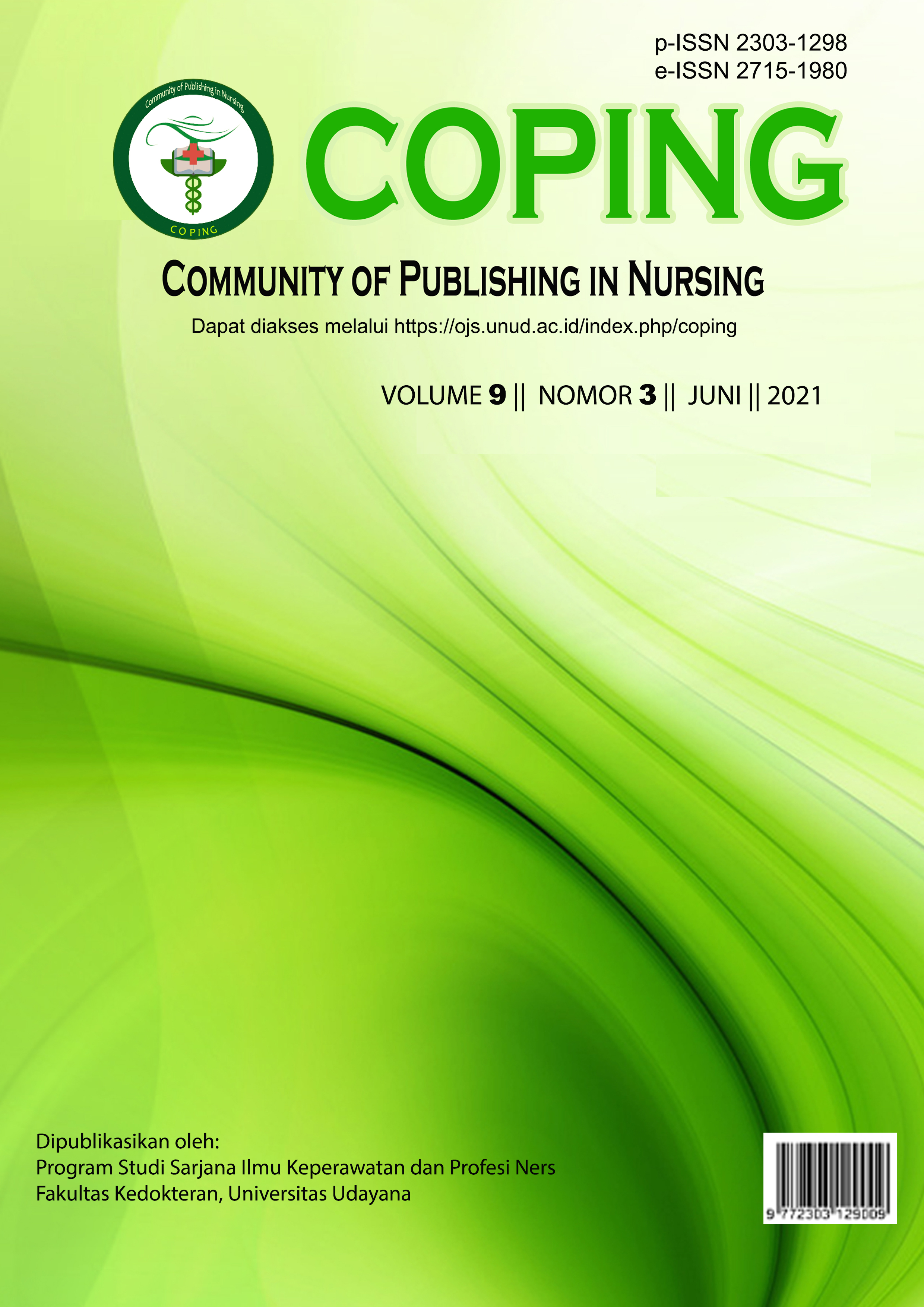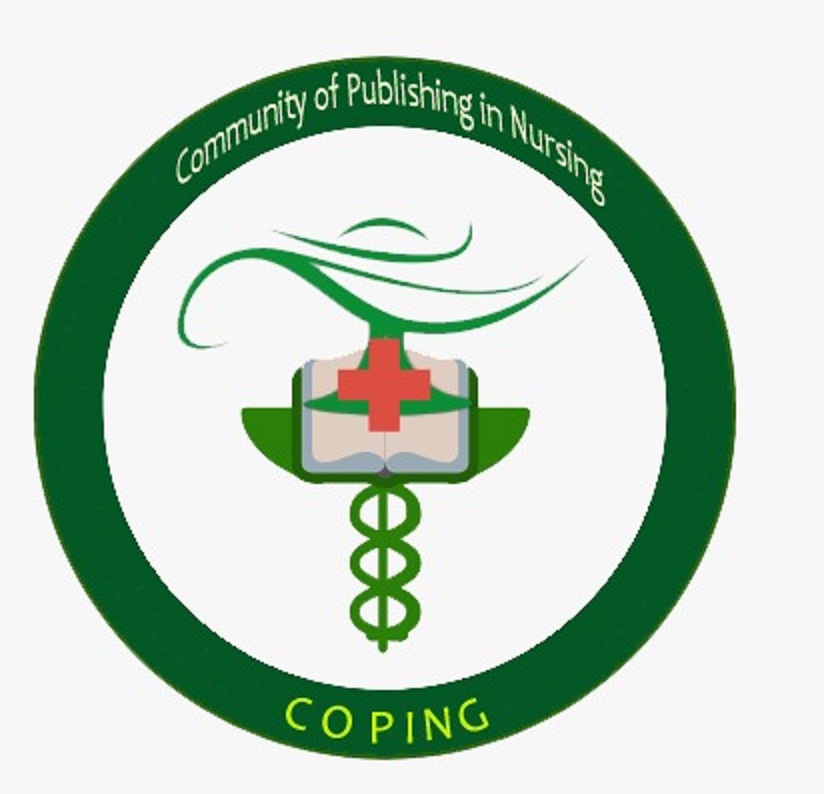HUBUNGAN PENGETAHUAN DAN SIKAP IBU MENGENAI STUNTING DENGAN KEJADIAN STUNTING DI DESA TIGA, SUSUT, BANGLI
Abstract
Stunting is one of global health problem which is not yet could be prevented especially in Indonesia where the stunting prevalention considered higher than other developing countries. Stunting on infants will bring negative impact if not countermeasured immediately. Fundamentally, life sustainability and health condition of an infant depend on the health condition of the mother. Mother's knowledge and attitude influence on how she takes care of her infants. This study aimed to find the relation of knowledge and attitude toward stunting with the occurance of stunting at Tiga Village, Susut, Bangli. This study used the descriptive correlational with cross sectional approach method. Samples were taken from Tiga Village, Susut, Bangli using simple random sampling method with the result that 107 samples. Based on the results of this study there were 77 infants (72%) who suffered from stunting. Mostly, the mothers were categorized as poor knowledge which was consisted of 67 mothers (62,2%). However, the attitudes were categorized as good which consisted of 78 mothers (72,9%). The further analysis found that there were weak relation and negative pattern between mother's knowledge and attitude toward stunting with stunting occurences. The significance value (p) of knowledge was 0.038 and of attitude was 0.011. Its expected the local health authorities (puskesmas) could increase their role in assessing and planning the health programs, especially to stunting prevention.
Downloads
References
Aridiyah, F. O., Rohmawati, N., & Ririanty, M. (2015). Faktor-faktor yang Mempengaruhi Kejadian Stunting pada Anak Balita di Wilayah Pedesaan dan Perkotaan. 3(1), 8.
Dewi, A. P. (2019). 31. Faktor – Faktor yang Berhubungan dengan Kejadian Stunting pada Balita 24 – 36 Bulan di Wilayah Kerja UPT Puskesmas Gadingrejo Kabupaten Pringsewu. 9.
Dinkes Bali. (2019). Diskes Bali—Website Resmi—Dinas Kesehatan Provinsi Bali. Diambil 29 Juni 2020, dari https://www.diskes.baliprov.go.id/
Kemenkes, RI. (2018). Situasi Balita Pendek (Stunting) di Indonesia.
Kristian, K., Kurniawan, F., & Kurniadi, A. (2019). Hubungan Pengetahuan Dan Sikap Dengan Status Gizi Pada Siswa Sekolah Dasar Di Jakarta. 7, 13.
Margawati, A., & Astuti, A. M. (2018). Pengetahuan ibu, pola makan dan status gizi pada anak stunting usia 1-5 tahun di Kelurahan Bangetayu, Kecamatan Genuk, Semarang. Jurnal Gizi Indonesia (The Indonesian Journal of Nutrition), 6(2), 82–89. https://doi.org/10.14710/jgi.6.2.82-89
Mayasari, D., & Indriyani, R. (2018). Stunting, Faktor Resiko dan Pencegahannya. 6.
Ni’mah, C., & Muniroh, L. (2015). Hubungan Tingkat Pendidikan, Tingkat Pengetahuan Dan Pola Asuh Ibu Dengan Wasting Dan Stunting Pada Balita Keluarga Miskin. 7.
Ni’mah, K., & Nadhiroh, S. R. (2015). Faktor Yang Berhubungan Dengan Kejadian Stunting Pada Balita. 7.
Olsa, E. D., Sulastri, D., & Anas, E. (2017). Hubungan Sikap dan Pengetahuan Ibu Terhadap Kejadian Stunting pada Anak Baru Masuk Sekolah Dasar di Kecamanatan Nanggalo. 7.
Pemerintah desa tiga. (2020). Desa Tiga. Diambil 29 Juni 2020, dari Desa Tiga website: http://tiga.desa.id/first
Pormes, W. E., Rompas, S., & Ismanto, A. Y. (2014). Hubungan Pengetahuan Orang Tua Tentang Gizi Dengan Stunting Pada Anak Usia 4-5 Tahun Di Tk Malaekat Pelindung Manado. 6.
Rahayu, S., Djuhaeni, H., Nugraha, G. I., & Mulyo, G. E. (2019). Hubungan pengetahuan, sikap, perilaku dan karakteristik ibu tentang ASI eksklusif terhadap status gizi bayi. AcTion: Aceh Nutrition Journal, 4(1), 28. https://doi.org/10.30867/action.v4i1.149
Rahfiludin, M. Z. (2019). Faktor-Faktor Yang Berhubungan Dengan Stunting Pada Anak Kelas Satu Di Sdi Taqwiyatul Wathon, Daerah Pesisir Kota Semarang. Jurnal Kesehatan Masyarakat, 7, 9.
Rinata, E., & Andayani, G. A. (2018). Karakteristik ibu (usia, paritas, pendidikan) dan dukungan keluarga dengan kecemasan ibu hamil trimester III. Medisains, 16(1), 14. https://doi.org/10.30595/medisains.v16i1.2063
Septamarini, R. G., Widyastuti, N., & Purwanti, R. (2019). Hubungan Pengetahuan Dan Sikap Responsive Feeding Dengan Kejadian Stunting Pada Baduta Usia 6-24 Bulan Di Wilayah Kerja Puskesmas Bandarharjo, Semarang. Journal of Nutrition College, 8(1), 9. https://doi.org/10.14710/jnc.v8i1.23808
Suarnata, I. W. A., Atmaja, A. T., & Erni, N. L. G. (2017). Kurangnya Partisipasi Masyarakat Dalam Pengelolaan Alokasi Dana Desa (Studi Kasus Pada Desa Manikliyu Kecamatan Kintamani Kabupaten Bangli). 8(2), 11.
WHO. (2020). WHO | The WHO Child Growth Standards. Diambil 29 Juni 2020, dari WHO website: http://www.who.int/childgrowth/standards/en/
Zogara, A. U., & Pantaleon, M. G. (2020). Faktor-faktor yang Berhubungan dengan Kejadian Stunting pada Balita. Jurnal Ilmu Kesehatan Masyarakat, 9(02), 85–92. https://doi.org/10.33221/jikm.v9i02.505







